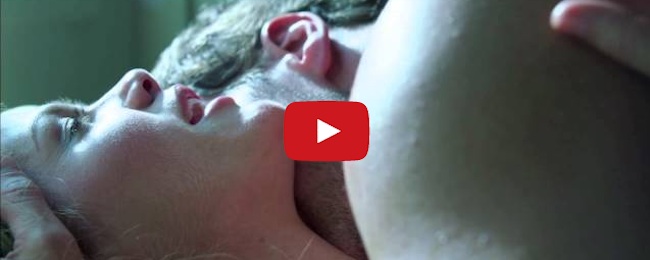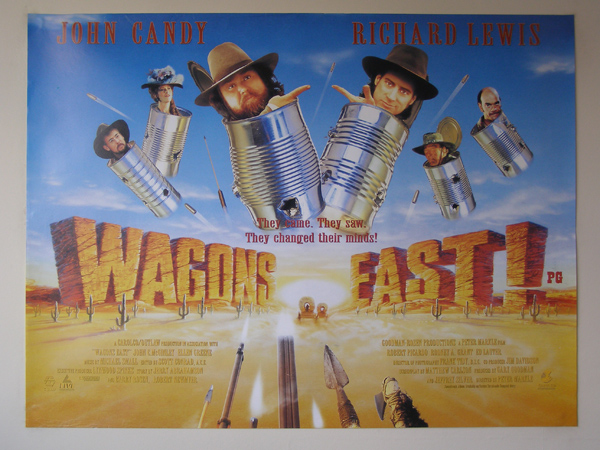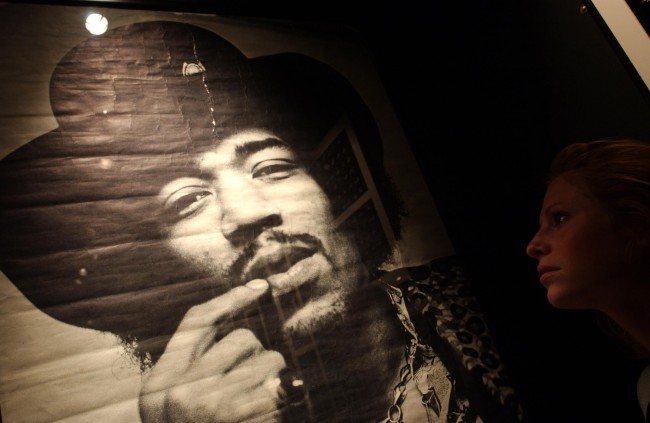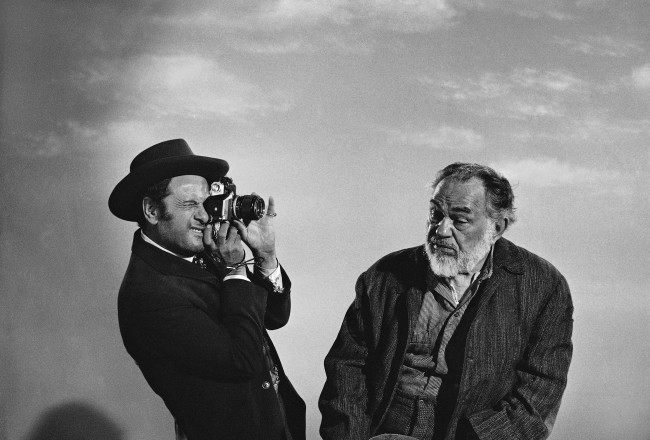Film Category
Includes cinema reviews and trailers for upcoming films. A digest of the best and worst interviews on movies and cinema.
Christmas Jumper-orama: The Hideous Gremlins And Fargo Sweats
READY for Christmas? Ready for your seasonal sweater?
Mondo have greated designs based on the 1984 film Gremlins and the 1996’s Fargo.

Read the rest of this entry »
11 Who Should be Cast in Ghostbusters 3?
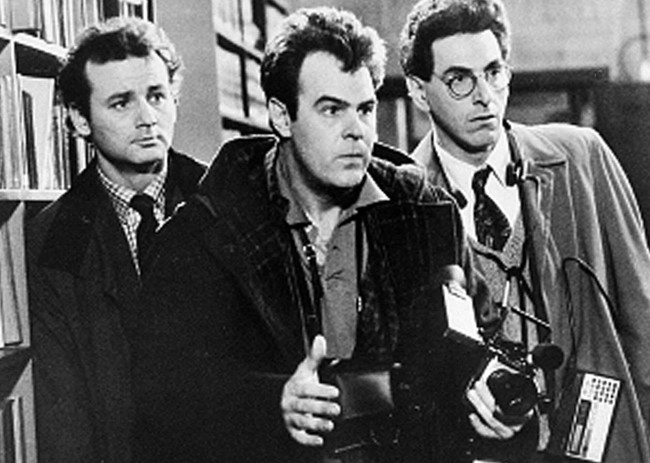
Shown in this scene from the 1984 movie “Ghostbusters” are Bill Murray, Dan Aykroyd, center, and Harold Ramis. (AP Photo)
AS you may have heard, Ghostbusters 3 is definitely happening.
However, there’s a twist – writer and director Paul Feig says the new film will be an all-female Ghostbusters cast and he will be writing it alongside Kate Dippold (from Parks and Recreation).
Of course, some fanboiz are spitting feathers over this, as an all-female Ghostbusters isn’t what they had in mind at all. However, if the casting is right, this could be a brilliant addition to the franchise.
Feig said on Twitter: “It’s official. I’m making a new Ghostbusters & writing it with @katiedippold & yes, it will star hilarious women. That’s who I’m gonna call.”
So who could Feig cast? There’s a wealth of brilliant and funny actresses out there and everyone will have a shortlist of their own. Here are some of our favourites.
Tina Fey
Tina Fey is one of the funniest humans on the planet. Whether she’d take the Ghostbusters role is another matter, but producers should be throwing money at her.
Mayim Bialik
Read the rest of this entry »
Posted: 9th, October 2014 | In: Celebrities, Film, Reviews | Comment
Every Perverted Corporate Logo From Idiocracy

THE film Idiocracy features perverted corporate logos created by Ellen Lampl. She tells TriviaHappy:
“A visual vernacular fusion of Nascar, candy packaging, Mexico handpainted signs and Japanese pop culture…
“Sometimes in comedy, graphics are the straight man. But, in Idiocracy, we let it be absurd, as part of the experience. We realized that life in its present state already had tendencies towards the ridiculous—branding seeps in everywhere—so we let it be over the top.”

Read the rest of this entry »
Joe Carnahan Fast Forwards To The Sex Scene: How To Fake A Hollywood Orgasma, A Video Guide
EVER filmed a Hollyood sex scene?
Joe Carnahan filmed one for his new film Stretch. To help us understand the process, he’s released this behind-the-scenes video of the film’s fast-forward-to scene. You will see Brooklyn Decker and Patrick Wilson getting into the loving zoone and then engaging in the full 10 seconds dry-humping coitus.
Read the rest of this entry »
Uncle Monty’s Rolls-Royce From ‘Withnail & I’ Is For Sale

UNCLE Monty’s 1953 Silver Wraith by Hooper & Co.is for sale. Last seen in the wonderful film Withnail and I, this is your chance to live the dream.
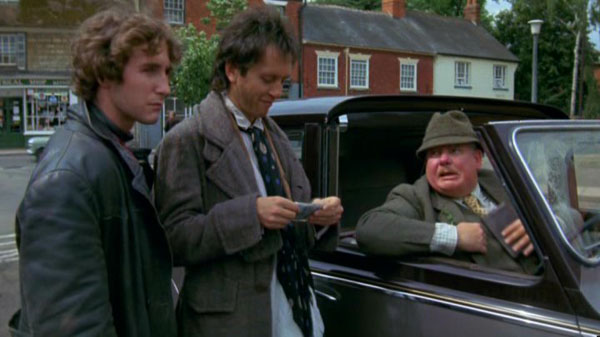
Owned by Nubar Gulbenkian (1896 – 1972), the car is showy affair.
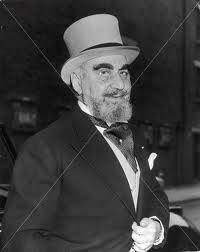
Nubar Sarkis Gulbenkian
2.VI.1896 – 10.I.1972
Armenian Petroleum Magnate & Socialite
Mr Gulbenkian is profiled:
“I’ve been retired all my life,” explains Nubar Gulbenkian, now 69. “but I’ve also been working hard all my life. A fortune does not look after itself, after all.” The fortune Gulbenkian refers to is one of the largest in the world. He inherited it from his legendary father, Calouste; who was nicknamed “Mr. Five Percent” because that was his usual cut on Middle Eastern oil and who owned possibly the world’s greatest art collection. Nubar, an Armenian, was exported in a Gladstone bag from his birthplace in Turkey, a land then inhospitable to Armenians, when he was only a few weeks old. Educated in England and France, he has been married three times and would be an impressive figure, even if he lacked his father’s business acumen (which he doesn’t), for his stupendous eyebrows, well trimmed beard, monocle and a habit of inserting into his lapel every morning a fresh orchid, the color chosen to suit the occasion. He has just written an autobiography, Portrait In Oil (Simon & Schuster), in which he discusses not only his finances but his voracious appetite for preferred pleasures like foxhunting, riding, food, drink, the odes of Horace, and driving, which he took up shortly after his 65th birthday. “If something is too much of a bore to do thoroughly and with zest,” says Gulbenkian, “then don’t bother to do it at all.”

Nubar Gulbenkian, the well known oil magnate, examines a Vintage Claret during the French wine tasting reception held in the cellars of Lebegue, the well known London wine merchants
Date: 09/10/1964
When asked whether he most enjoys city life or country life, horses or Rolls-Royces, old brandy or young women, Nubar Gulbenkian reflectively strokes his luxuriant beard, puffs deeply on his cigar and makes a simple affirmation of love for the business of good living: “I prefer everything.”
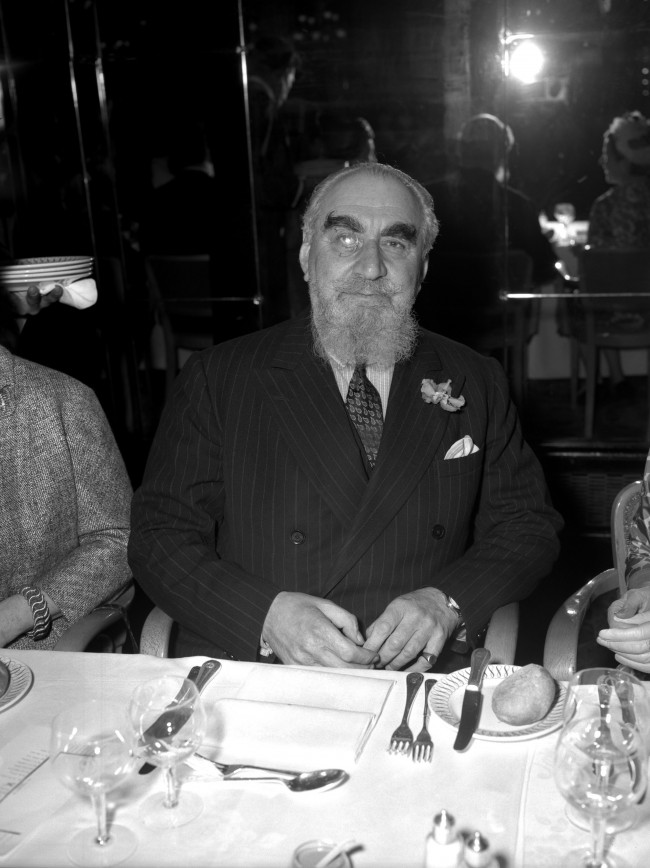
Philanthropist and bon viveur, Nubar Gulbenkian
Date: 04/05/1961
For £250000 o.n.o, you get a long wheelbase, coach built, 4.5litre vehicle one off with snakeskin trim, electic windows, Sedanca de Ville style roof, air con. and a speedometer in the back, so allowing Gulbenkian to keep tabs on his chauffeur and ensure he drove quickly.

Bid at Frank Dale & Stepsons.
The Best Worst Last Films by Legendary Actors
DEATH is a terrible inevitability. You could pop your considerable clogs at any given moment. You might be half way through a banana. You could be mid-poo, like Elvis. You could be *this close* to finishing that computer game that proved so difficult all those years. You might suddenly die just before someone finishes a joke.
Worse than all these things put together, is when great actors die before they’ve had the chance to do one last film that is any good.
There’s a whole host of brilliant actors who have been in absolute crap – Robert De Niro in ‘The Adventures of Rocky & Bullwinkle’, Michael Caine in ‘Jaws: The Revenge’, Kevin Spacey in ‘Fred Claus’, Faye Dunaway in ‘Dunston Checks In’ and Al Pacino in Adam Sandler’s beyond woeful ‘Jack & Jill’.
However, they all got another shot at correcting the blips on their showreels.
Read the rest of this entry »
The Truth About Stanley Kubrick’s 2001: A Space Odyssey Letter
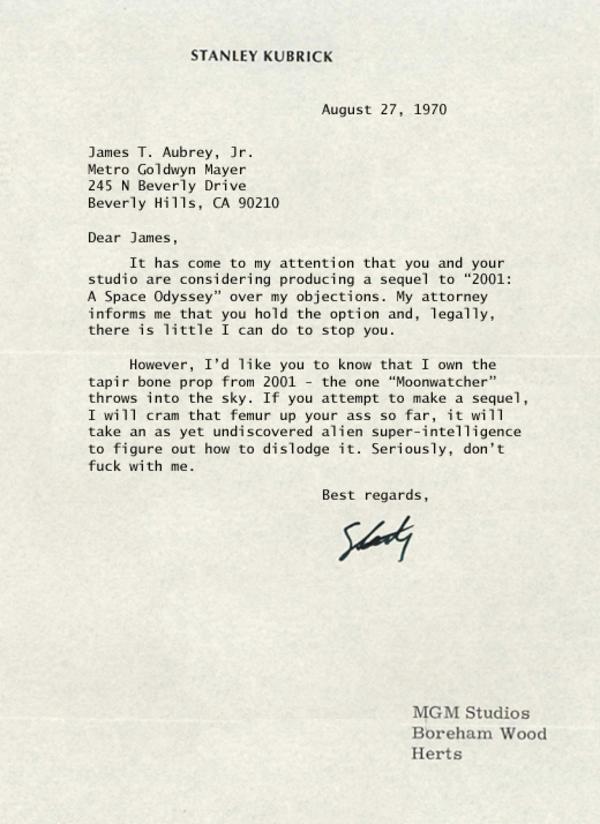
YOU’LL have seen the sweary letter signed ‘Stanley Kubrick’ written to the head of AGM about the sequel to 2001: A Space Odyssey.
Read the rest of this entry »
Watch Dock Ellis The Movie: ‘I Took LSD And Pitched A Perfect Game For the Pittsburgh Pirates’
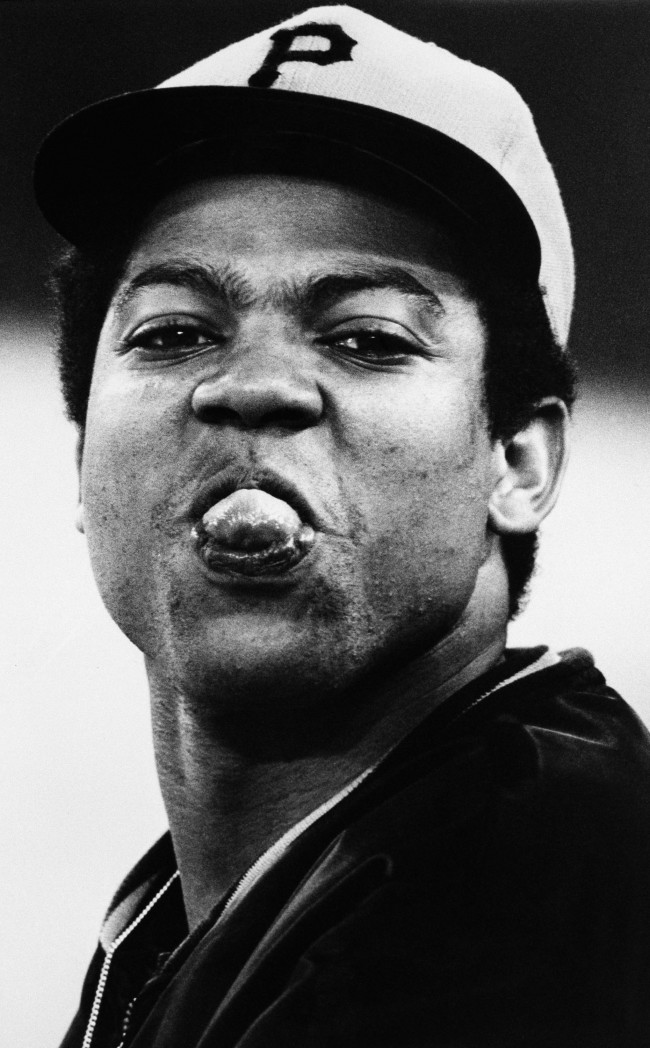
Pittsburgh Pirates Pitcher Dock Ellis expresses his sentiments about West Division Winners San Francisco Giants, after their win, Thursday, in this Oct. 1, 1971 file photo taken in Philadelphia, Pa.
DRUGS and sport is a familiar story. One school of thought says all drugs cheats should be banned. Another says that since cheating is rife, why not make the drugs legal.
Dock Ellis took drugs and played pro sports. He’s the subject of the film No No: A Dockumentary.
Read the rest of this entry »
Watch Grant Meyers Use Raw Meat And Toilet Plungers To Make Porno Films Sound Effects
GRANT Meyers makes sound effects for porn films:
Watch 1896 Footage Of Life In Palestine
IN 1896, French brothers Auguste and Louis Lumière‘s cameramen filmed life in Palestine, then part of the Ottoman Empire. All 500,000 inhabitants were subjects of the Sultan of Constantinople.
Lobster Films found the reels. Serge Bromberg, the company’s co-founder, explains:
…this year, we have something very special to show. In an antique shop, we have discovered 93 wonderful little camera negatives from c. 1897, all shot in the Middle East (Jerusalem, Palestine, Egypt.[…] etc), that would form an ideal 80 [minute] program of what could be among the earliest films shot in the region still in existence. … They are in wonderful condition … Not a scratch, no decomposition, and those little sprocket holes typical of the films of that year.
This clip is from documentary Palestine: histoire d’une terre 1880-1950.
Spotter: Sabotage Times
Woody Allen Was Right! Steak Is Healthy!
WAY back in 1973 Woody Allen did a movie called Sleeper, from which comes this little scene above. The idea was that he went to sleep for 200 years and thus has to learn how to deal with his new world that he wakes up in. Sorta a Woody Allen take on Rip Van Winkle.
Read the rest of this entry »
See Andre 3000 as Jimi Hendrix in All Is By My Side Trailer
ROCK biopics are always fun, even if they’re not always good. There’s been mixed movies, from The Runaways to The Doors, from Ray to What We Do Is Secret. Even the crappy ones are still worth a look because, even if the storytelling and acting is lousy, at least the music will be great.
And so, we’re looking down the barrel of a Jimi Hendrix biopic and there’s a lot riding on it.
Why? Well, Hendrix was a smooth, fascinating character with a preposterous talent and a gentle soul – that’s not easy to capture. Moreover, Outkast’s brilliant Andre 3000/Benjamin is playing the title role. There’s no-one on Earth who wants this to fail.
Read the rest of this entry »
10 Ridiculous (But Awesome) Horror Movie Tag-Lines of the 1980s
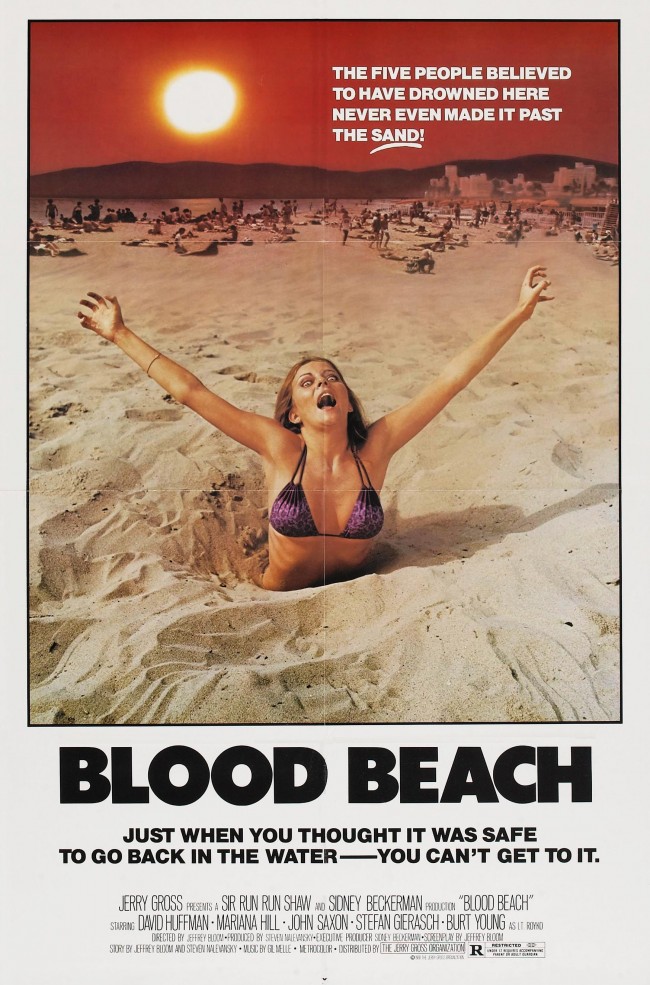
IF the Seventies proved a fertile time for imaginative horror filmmakers, the 1980s very much represented a new age of plenty, a span wherein every idea that had worked in a movie once before was hauled out a second, third and sometimes fourth time.
And because of the home video revolution and VHS technology, new filmmakers had the opportunity to get their movies seen by more eyes than ever before.
In terms of the decade’s horror then, there was more of everything to enjoy: more slasher films, more Jaws films, and more holiday-themed horrors too.
Read the rest of this entry »
Posted: 30th, June 2014 | In: Film, Flashback, Key Posts | Comment
The Day of the Animals: The 5 Strangest ‘Revenge-of-Nature’ Movies of the 1970s
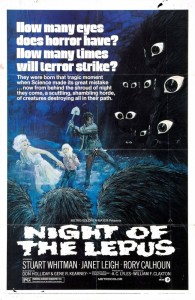
IT’S not nice to fool with Mother Nature.
In the seventies, science fiction and horror filmmakers were certain that mankind was going to soon face his comeuppance for polluting and over-populating Mother Earth. And more so, that this comeuppance was going to be delivered at the paws, claws, talons, webbed fingers, and teeth of our former friends: the animals.
Call it the Circle of Death.
Between 1970 and 1979, more than a dozen genre films involved Mother Nature striking back against man for his mis-use of pesticides, his damage of the ozone layer, and for polluting previously unspoiled terrain.
Read the rest of this entry »
Posted: 30th, June 2014 | In: Film, Flashback | Comment (1)
Eli Wallach Takes Photos On The Set Of MacKenna’s Gold, 1967
FLASHBAK to August 4 1967:
Actor Eli Wallach takes advantage of the studio lights on the set of “MacKenna’s Gold,” Aug. 4, 1967, to make some stills of tone of his co-stars in the film, Edward G. Robinson. Robinson plays the role of an almost blind prospector. Wallach adjusts the lights on his subject and takes pictures with his own Nikon F camera. (AP Photo/David F. Smith)
Posted: 25th, June 2014 | In: Celebrities, Film, Flashback | Comment
Straight Outta Central Casting: First Look At The Cast For The NWA Biopic
HIP HOP royalty, Dr. Dre, has shared details of the forthcoming NWA film ‘Straight Outta Compton’, stating that the biopic will see release on August 14, 2015.
The film will tell the tale of how NWA – Dr Dre, Ice Cube and the late Eazy E – came to be.
Dre and Eazy E will be played by newcomers while Ice Cube’s own son will play his father. You have to hope there’s no sex scenes with an actress playing his mother, because that would be weird.
Yesterday, Dre tweeted an image of the cast, and they really look the part, if better looking than the original members.

Ice Cube will be played by O’Shea Jackson Jr, while Dre will be played by Marcus Callender who has had some roles in Criminal Justice, Blue Bloods and Elementary. It is thought that Dre wanted Michael B Jordan, but he’s signed up for the The Fantastic Four franchise.
Read the rest of this entry »
‘The Same Animals…Only Functioning Less Perfectly:’ The Five Most Underrated George A. Romero Movies
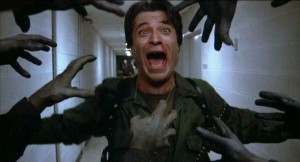
GEORGE Romero’s impressive movie-making career stretches back to the Pittsburgh area in the late 1960s and spans over forty years.
Like many horror filmmakers of his generation, Romero has seen his share of big successes, like Dawn of the Dead (1978) and Creepshow (1982), critical darlings like Martin (1976), cult classics such as The Crazies (1973) and the occasional out-right bomb, like Diary of the Dead (2007).
But several of Romero’s finer films didn’t meet with financial or critical success, and deserve to have further light shone on them. Accordingly, my selections for the most underrated of his feature films are listed below.

Hungry Wives (1971)
George Romero’s self-described “feminist” horror movie, also known as Jack’s Wife and Season of the Witch, involves a bored suburban house-wife, Joan Mitchell (Jan White) who is only able to define herself in terms of her place in the suburbs as a married woman and a home-maker.
In an attempt to rebel against her “accepted” role in society, Joan delves into witchcraft and then adultery, but the movie’s crafty point is, commendably, that witchcraft is no more defining or self-actualizing for Joan than being a house-wife had been. She has merely changed her demographic affiliation or club, while everything else in her life remains the same
Hungry Wives is so powerfully-wrought because George Romero serves as both editor and director, and his editing flights-of-fancy make the movie’s point plain in terms of visualizations. Early on, for instance, Joan experiences a telling dream in which her husband leads her around on a leash, like a dog. One of the film’s final images reveals Joan involved in a coven ritual, a red rope looped about her neck, and the symbolism is plain: she has merely traded one trap for another. This visual counterpoint is underlined by the counsel of Joan’s therapist, who advises her that she is imprisoning herself, and must change that pattern if she hopes to make her life better.
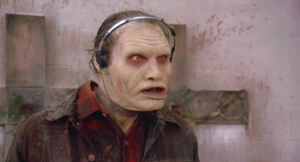
Day of the Dead (1985)
Before 2007 at least, Day of the Dead (1985) was the least-appreciated of the famous Romero living Dead cycle. This lack of approbation was a result, in part,of the film’s overtly and relentlessly serious tone. For all its mayhem and violence, Dawn of the Dead — set at a shopping mall — also had a fun or jaunty side to it. But Day of the Dead proved a totally different animal: a solemn and extremely gory exploration of mankind’s last chapter as the dominant species on Earth.
Rather unconventionally, the movie ends with a committed and likable protagonist, Sarah (Lori Cardille) realizing it is all over but the crying, and essentially giving up the fight so as to live her last years (and the last years of humanity…) on a nice island beach somewhere with two decadent helicopter pilots.
But importantly, Day of the Dead also moves the cycle forward in significant fashion via its introduction of Bub (Howard Sherman), a zombie who has been domesticated, after a fashion, and reveals both rudimentary memory, and rudimentary humanity.
In fact, this lovable zombie shows more humanity than the film’s brutal military leader, Rhodes (Joe Pilato), and thereby suggests that the change in the social order might not be all that bad, if the zombies continue to evolve towards something…civilized.
Finally, Day of the Dead features an epic and awe-inspiring opening,:a view of a city in Florida completely overrun by the living dead. This moment is arguably the biggest in scope of the entire dead run, and establishes brilliantly the zombies’ numerical advantage. As this shot reveals, Day of the Dead is actually the Twilight of Man.
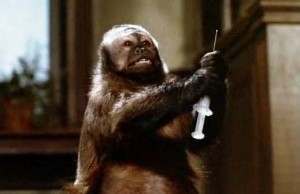
Monkey Shines (1988)
I still remember discussing this Romero horror film at length with visiting movie critic Molly Haskell at the University of Richmond in the late 1980s. We agreed that the critical community had virtually ignored what was a very powerful and very relevant film about human nature.
Monkey Shines involves a man, Allan (Jason Beghe) who is paralyzed in an accident and becomes a quadriplegic. As such, he is provided by his scientist friend (John Pankow) a capuchin monkey named Ella to act as his arms and legs. Before long, Ella and Allan form a close bond of friendship and dependence…but then each begins acting on each other’s emotional states and desires. Soon bloody murder is being committed…but is it at Ellas behest, or Allan’s?
Monkey Shines informs audiences that the “devil” is “animal instinct,” which acts by its “own set of laws,” and then asks the pertinent question: are we that different from the lower animals we treat as pets? Are we truly evolved, or — underneath the surface — are we just as violent and capricious as cousins in the jungle?
The scenes involving Ella in Monkey Shines are convincing and powerful, save for a few moments where an inert stand-in is clearly utilized, and the film’s debate about instinct (an avatar for the human subconscious in some critical way…) makes the film stand out in an era when rubber reality and slasher movies reigned supreme.
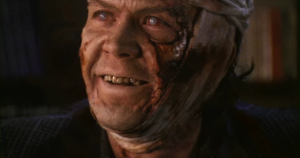
The Dark Half (1993)
Here’s a Stephen King adaptation that almost nobody loves, or even remembers. In The Dark Half (1993) Timothy Hutton plays Thad Beaumont, a writer grappling with his famous nom du plum, George Stark. When Beaumont elects to kill his famous literary name, however, the alter ego comes to life and threatens the writer and his entire family.
A deliberate and modernJekyll-Hyde story, The Dark Half is part of an early 1990s “meta” or post-modern movement in horror. Films such as Wes Craven’s New Nightmare (1994) and John Carpenter’s In The Mouth of Madness (1994) gazed at worlds in which the line between fiction and reality were blurred. The Dark Half treads meaningfully in similar territory, and gazes at the act of writing as literally a physical birth, as an independent creation that – much like a human child – can no longer be fully controlled by its creator.
There’s nothing flashy or expensive about The Dark Half, and the ending is a bit of a bust, but otherwise Romero crafts a thoughtful, low-key horror film that possesses some electric jolts. One early scene, set in an operating room is downright terrifying, and another — with a woman broaching an invader in her dark apartment — also gets the blood flowing.
More than anything, however, The Dark Half explores the idea that the creative act of writing represents a violent assertion of will. “The only way to do it is to do it,” one character notes, and this same determination indeed is what wills the Dark George Stark into the world.

Survival of the Dead (2009)
Survival of the Dead is yet another Romero living dead movie, and another seriously underrated work of art. Since the very beginning of his career in 1968, director Romero has used his zombie saga to explore political and social issues of the time.
For example, Night of the Living Dead speaks to the political violence and upheaval of 1968, and to race relations in America. Dawn of the Dead very much concerns conspicuous consumption and the “Crisis in Confidence” Carter Age. And Land of the Dead (2005) explores post 9/11 territory.
Similarly, Survival of the Dead is a thoughtful, point-for-point allegory for American involvement in the Iraq War. Unfortunately, horror movie fans were too busy complaining about CGI blood effects to notice the movie’s clever thematic framework.
In short, Survival of the Dead involves a refugee, O’Flynn (Kenneth Welsh) — the fictional equivalent of Ahmed Chalabi — who tricks American armed forces into fighting his war for him, and ousting his enemy, Muldoon (Richard Fitzpatrick) — a Saddam Hussein figure – from the land that he would like to lead, paradise-like Plum Island.
Obligingly the National Guard moves in — guns blazing — only to find that matters aren’t so straight-forward. The soldiers have become involved in a pissing match that, ultimately, doesn’t concern them or their well-being.
The film features an Old West sort of milieu on Plum Island, with rivals O’Flynn and Muldoon (Richard Fitzpatrick) wearing cowboy hats and riding horses while zombies (here called Dead-Heads) are trapped in the nearby corral.
Again, Romero’s thoughtful set-up makes it impossible not to think of the post-911 “dead or alive” rhetoric from the Bush White House. The film’s final imagery — which depicts cowboy zombie versions of O’Flynn and Muldoon trying to kill each other under a bright moon — makes one despair that human nature is ever going to change.
With neo-con dead-enders everywhere on cable news stations this week attempting to re-enlist America in the war in Iraq a decade later, Survival of the Dead is more relevant than ever. Accordingly, this Romero film is really about discredited zombie ideologies that have long outlived their usefulness, but which keep coming back from the dead to threaten the rest of us.
Posted: 20th, June 2014 | In: Film, Flashback, Key Posts | Comment
You Don’t Dare Kill It: The 5 Best Alien (1979) Knock-Offs of the 1980s

RIDLEY Scott’s Alien (1979) dramatically altered the template for horror films set in outer space. For example, the blockbuster film was among the first (after Dark Star [1975] to suggest that travel in the final frontier would be the purview of “work-a-day” space truckers rather than noble explorers or adventurous astronauts.
And instead of intrepid space travelers fighting men-in-rubber suits inside idealized white-on-white space station environs (as was the case in The Green Slime [1968]) Alien suggested a technological space age marked by endless industrial corridors and aliens of constantly shifting dimension.
The Scott film’s central alien — a bio-mechanoid horror created by H.R. Giger — could also gestate inside a living human host, and this fact ushered in a new era of cinematic “body horror.”
As with any genre blockbuster, Alien almost immediately spawned a host of knock-offs, some terrible and some quite good. These films found much material to imitate and emulate, from the diverse make-up of Alien’s victim pool, to bloody variations on Alien’s famous chest-burster birth scene. Many Alien knock-off films also involved long forgotten derelicts or other structures on alien planetary surfaces, for instance. Inevitably, human crews would discover these Lovecraftian edifices and wake up age-old horrors.
Among the Alien knock-offs of the 1980s were Scared to Death (1981), Forbidden World (1982), The Beast Within (1982), Parasite (1982), The Being (1983), and Biohazard (1985), to name just a handful.
The list below represents five of the best — or at least the most memorable– of the Alien knock-off breed. As is often the case regarding knock-offs, the best such films are invariably those that re-purpose not merely the clichés from one source – in this case — Alien — but also from other literary or cinematic works as well.

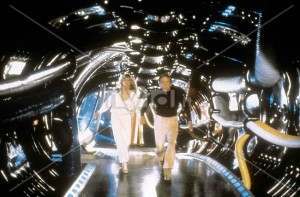
Saturn 3 (1980)
The story of a psychotic mad scientist, Captain Benson (Harvey Keitel) who travels to the Experimental Food Research Station on a moon of Saturn during a twenty-two day eclipse and communications black-out called “Shadow Lock,” the much-reviled Saturn 3 might actually be considered, first-and-foremost, a child of the Frankenstein story.
On remote Saturn 3, Benson assists two scientists working to alleviate a famine on overpopulated planet Earth. Major Adam (Kirk Douglas) and his romantic partner, the beautiful and innocent Alex (Farrah Fawcett) are wary, however, of Benson’s form of help: a colossal humanoid robot named Hector, the first of the “Demi God” series. Hector boasts human intelligence, not to mention human tissue. And echoing his creator’s madness, he soon begins lusting mightily after Alex.
Outside the space-age Frankenstein monster tropes, Saturn 3, like Alien, is set in a location where aid and assistance from the authorities is not available. Similarly, Earth in both films is depicted as a used-up dystopia. In Alien, “the company” controls everything on Earth, and in Saturn 3, humans have polluted the planet and resorted to rampant drug use because of the planet’s inhospitable nature.
Hector stands in for the titular alien, as well, and hunts down the film’s Adam and Eve-styled protagonists in the facility’s twisting factory-like corridors.
Finally, in Scott’s film, the Alien is almost entirely a creature of instinct, driven by impulses to reproduce and survive. In Saturn 3, by contrast, the monster is a machine that experiences something “human” beyond programming: psychosis and lust. Hector is ultimately beaten, however, because as a machine he can’t understand the human concept of self-sacrifice.
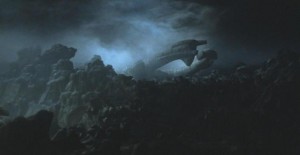
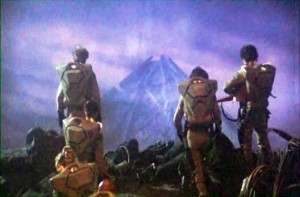
Galaxy of Terror (1981)
Aliens (1986) director James Cameron served as a production designer on this knock-off from Roger Corman’s New World Studios, and in the process created a universe that is very reminiscent of the Scott film, at least from a visual stand-point. Like Alien, Galaxy of Terror is set in a “lived in” universe (unlike, say the white-on-white minimalism of 2001: A Space Odyssey [1968] or Space: 1999 [1975 – 1977].)
In Galaxy of Terror, a rescue ship, The Quest, heads to the mysterious planet called Morganthus to discover the fate of the Remus, another ship which crashed there. Once on the surface of dark Morganthus, however, the Quest crew discovers a strange alien pyramid. Soon, the crew — including characters played by Robert Englund, Sid Haig, Grace Zabriskie, and Erin Moran — begins to experience their worst fears made manifest.
In this case — if the plot summary hasn’t given it away already — Galaxy of Terror draws inspiration not only from Alien, but from Forbidden Planet (1956), a film in which another rescue mission (to Altair-4) runs afoul of a “Monster from the Id,” actually the human subconscious. That’s pretty much the case here, only with slimy monsters, doppelgangers, and a scene involving a rape by a giant alien worm.
The alien pyramid in Galaxy of Terror looks like it could have been constructed on Alien’s LV-426, and the slate gray sky above it even looks eerily similar. More trenchantly, perhaps, Galaxy of Terror’s rape scene also reflects the violent sexuality seen in Alien, the harsh re-purposing of the human body for unwholesome breeding purposes.
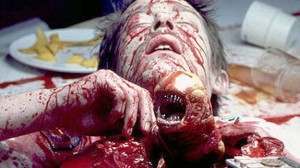
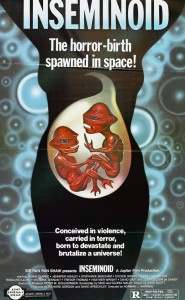
Inseminoid (1982)
Also known as Horror Planet, Inseminoid is probably the schlockiest film on this list. The film stars Judy Geeson, Stephanie Beacham and Victoria Tennant as astronaut scientists, and involves the discovery of an ancient alien tomb on a far distant planet.
Before long, one astronaut, Sandy (Geeson), is impregnated by the last living alien in the tomb, and becomes the protective expectant mother of two ghastly alien twins. Her maternal instinct is re-purposed to serve an interloper’s biological imperative.
And just as Kane in Alien gives birth to the chest-burster, here Geeson gives birth to two monstrous tykes who — naturally — nurse on human blood.
Inseminoid’s central conceit is that everything on this distant alien world is “doubled.” The planet orbits twin stars, and the alien mythology is obsessed with twins, and so forth.
Although lacking tact (especially in the flashbacks to Sandy’s impregnation), Inseminoid occasionally features a beautifully composed shot, such as one on the purple surface of the distant planet during a funeral. There was also a funeral (for Kane) in Alien, but this shot of an alien vista grants the hororr film a nice sense of scope and also a visceral sense of place.
Like Alien, Inseminoid also concerns an alien species that co-opts the human race for its own reproductive requirements. Here, the aliens suckle on the (open) wounds of dead humans, and Sandy herself becomes a bit blood-thirsty as her biology is altered to play host to most unwelcome invaders.
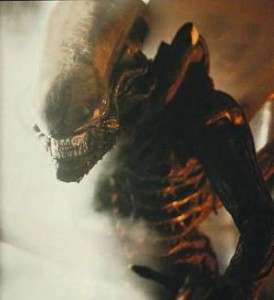
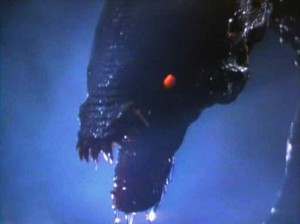
Creature (1985)
A corporate spaceship, the Shenandoah, sets down on Titan to investigate an ancient alien archaeological site. The Shenandoah’s mission is imperiled, however, by the arrival of a ship from a competing corporation, Richter Dynamics, and the presence of its freakazoid captain, played by a scenery-chewing Klaus Kinski.
Before long, the rival crews learn that the archaeological site was actually something akin to an alien zoo or laboratory: a collection of diverse aliens from all over the universe. Unfortunately, one managed to break free from its captivity and is now attacking and brainwashing human beings…
Creature — while ripping off Alien lock, stock and barrel — also offers a number of notable fan touches. The film’s Ripley equivalent is Beth Sladen (Wendy Schaal), and her name seems like a nod to Elisabeth Sladen, who accompanied Tom Baker’s Fourth Doctor in Doctor Who on several dangerous adventures in space in TV serials such as “Ark in Space” and “Planet of Evil.” The film also quotes dialogue directly from — again – Forbidden Planet.
Additionally, the key to destroying the unleashed zoo specimen in Creature is Sladen’s knowledge of Howard Hawks’ The Thing (1951). She remembers that — in the movie’s last act — the imperiled humans electrocuted an invading alien.
These and other tributes assure that Creature can be contextualized as more than mere Alien knock-off.
Finally, Creature also revives the “corporate” culture social critique underlying the Scott film. In this case, the rival spaceships are involved in what the film’s dialogue calls “a fierce race for commercial supremacy.”
Even in space — with drooling, brainwashing aliens out and about — the ultimate enemy is…big business.
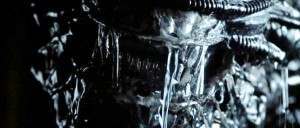
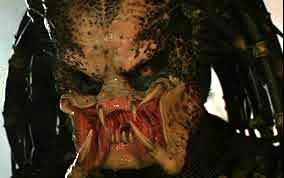
Predator (1987)
John McTiernan’s 1987 adventure/horror movie is actually part-Rambo (1985) and part-Aliens (1986), and is the best film on this list, by far. Still, much of its energy seems derived from the Alien aesthetic.
Here, we get the remote location (a jungle in Central America instead of outer space), an alien — with a similarly distinctive jaw-line — that cuts down one human at a time, and is a kind of alpha or apex predator.
The alien in Scott’s film was the ultimate survivor, able to breed and survive in any setting. The alien, by contrast, in Predator is the universe’s greatest hunter, a characterization that sets up a conflict with planet Earth’s greatest warrior, Dutch, played by Arnold Schwarzenegger.
But the real commonality between Alien and Predator arises in a mid-story surprise and revelation of conspiracy. In Alien, the Nostromo’s science officer, Ash (Ian Holm), protects the alien all along, and considers the rest of the human crew “expendable,” on secret orders from the Company.
In Predator, Dillon (Carl Weathers), an ambitious military officer, uses the cover of a rescue mission to get Dutch’s men into a position where they can acquire important documents about “the enemy.” As in Alien, the soldiers serving under Dutch are thus considered “expendable.”
Neither Ripley nor Dutch respond well when they expose the secret conspiracy, and the conspirator. In Predator, however, Dillon gets a shot at redemption, and Ash gets…decapitated.
Posted: 7th, June 2014 | In: Film, Flashback, Key Posts | Comments (2)
16 Tragic Science Fiction Calendar Miscalculations
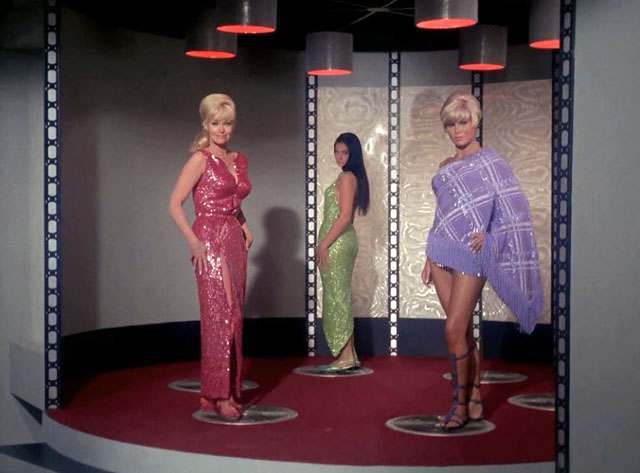
THE phrase “Where’s my jetpack?” has become something of a collective outcry in recent years. Since the 1950s, we’ve been indoctrinated with visions of the future full of spaceships, time travel, instant food, laser guns, and best of all, dazzling sci-fi duds.
Instead, here we are in 2014 and things haven’t shaped up to that Utopian model at all. Sure, communication technologies have exceeded our expectations, but the “Jetsons” lifestyle still hasn’t arrived. Thanks to pop culture’s broken promises of delivering robot maids and whooshing Star Trek doors in a timely manner, we are all a little disappointed.
Here’s a list of sci-fi TV shows and movies and the dates they were supposed to take place. Some are reasonable… some way, way off the mark.
1. LAND OF THE GIANTS
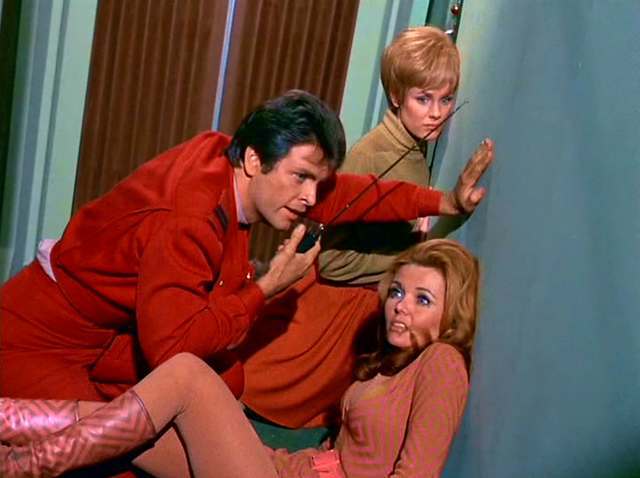
Land of the Giants is set in 1983. This is one of the more blatant errors in calculation. Fancy tourist spaceships are still nowhere in sight, and we’re 31 years past the show’s setting.
2. UFO
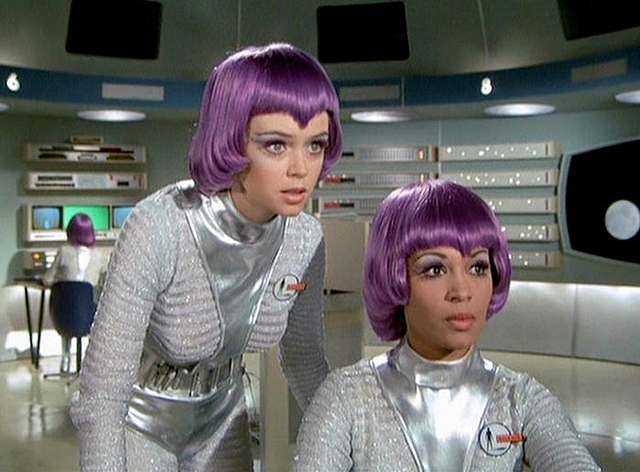
The TV series UFO. was actually set in 1980. As you will recall, the SHADO facility was one of the grooviest places on earth. Everything was painted mod colors with babes in mini-skirts or unitards strolling the hallways… and there was Moonbase. Well, it’s 34 years past due, and still no purple haired Moonmaidens.
3. SPACE:1999

Anyone who watched Space:1999 knows the show should’ve been called Space:1976. Evidently, earth-toned velour track suits were in vogue on Moonbase Alpha.
4. LOGAN’S RUN
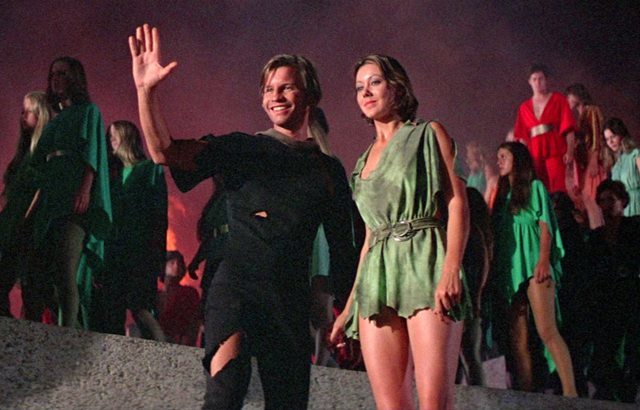
Logan’s Run is set in 2274. Even though it features teleportation devices, I guess it’s far enough away in time that I can go along with it.
5. BLADE RUNNER
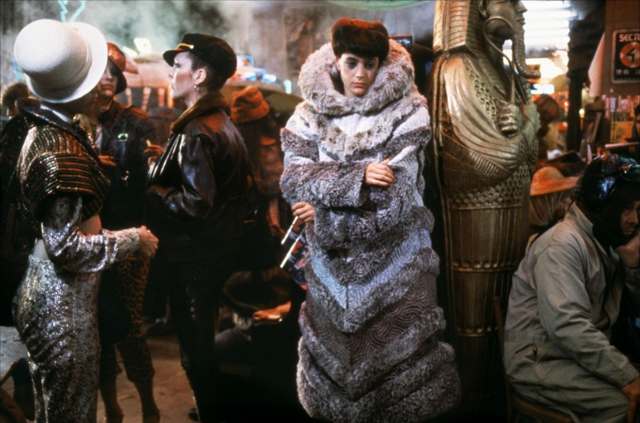
Blade Runner is set in 2019. We officially have five years to go before we have to start worrying about those pesky replicants.
6. TOTAL RECALL
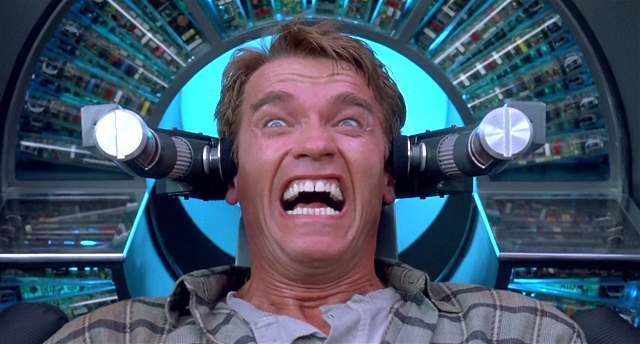
The year is 2084 in Total Recall. I was kind of hoping that virtual reality thing would come around a bit sooner. Although, the three-breasted mutant women and cars driven by Howdy Doody robots can wait.
7. FORBIDDEN PLANET

Forbidden Planet is set in the early 2200s. Can we reasonably expect interplanetary travel and Robbie the Robot in a couple hundred years? The “plastic educator”, a device capable of measuring and enhancing intellectual capacity, seems doable.
8. THE JETSONS
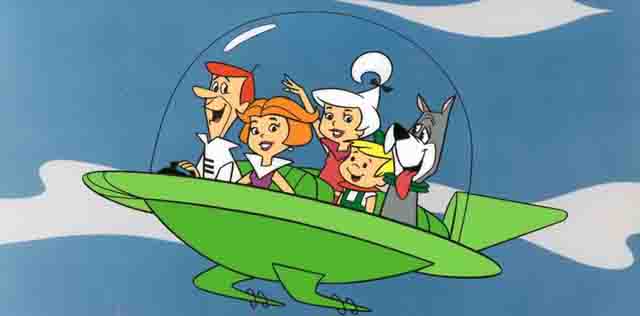
The original Jetsons was supposed to take place in 2062. If I could pick any science fiction universe to live in, it would be The Jetsons, without hesitation. Sure, you still had to work and deal with overbearing bosses (Mr. Spacely was a dick!), but it was more than compensated by the Utopian awesomeness of it all.
9. PLANET OF THE APES

The crew in Planet of the Apes left earth in 2006 in their spaceship traveling at near light speed. Spoiler alert: They crash landed on Earth in the year 3978.
10. ESCAPE FROM NEW YORK
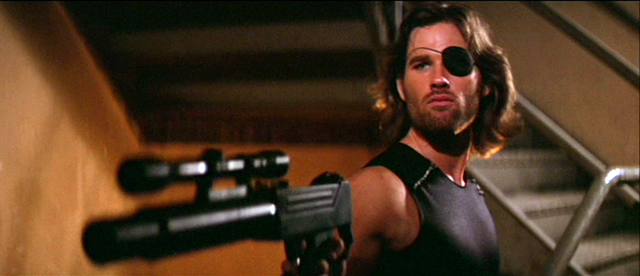
The tag line for Escape from New York:
The year is 1997. The Big Apple is the world’s largest penitentiary. Breaking out is impossible. Breaking IN is INSANE.
11. METROPOLIS
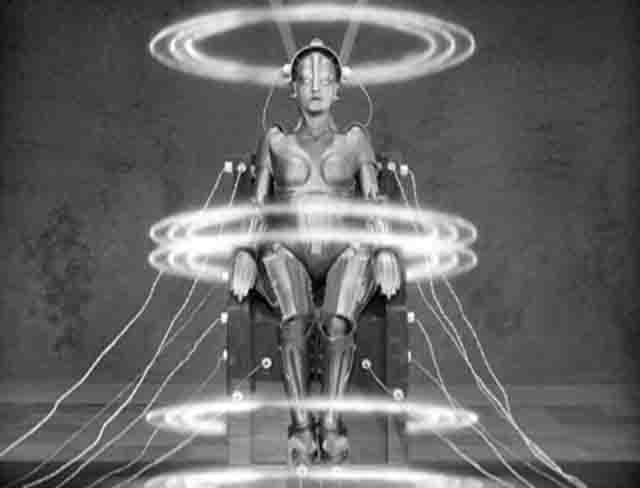
The 1927 film Metropolis is set in 2026.
12. 2001: A SPACE ODYSSEY
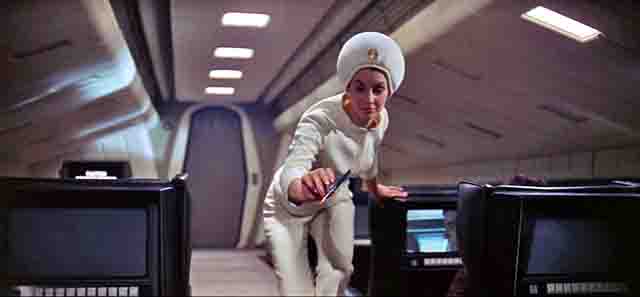
2001: A Space Odyssey was right on the money for a lot of things, but it overshot its wad on artificial intelligence and suspended animation.
13. ALIEN
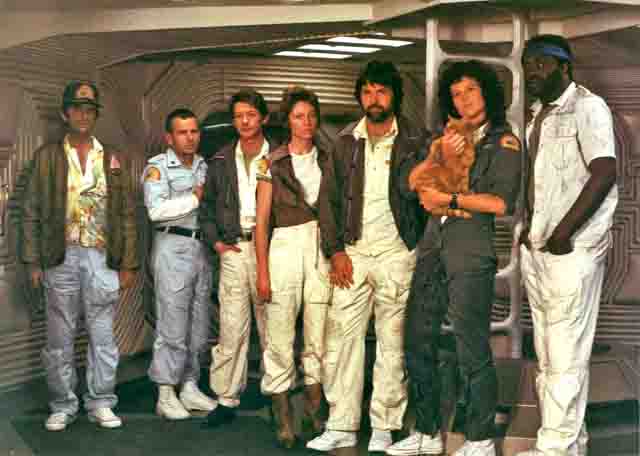
Alien is set in 2122. Again, filmmakers have a tendency to underestimate the time it will take to develop this suspended animation thing. It’s the only feasible way to have interstellar space travel, so I understand their motives.
14. BUCK ROGERS IN THE 25TH CENTURY
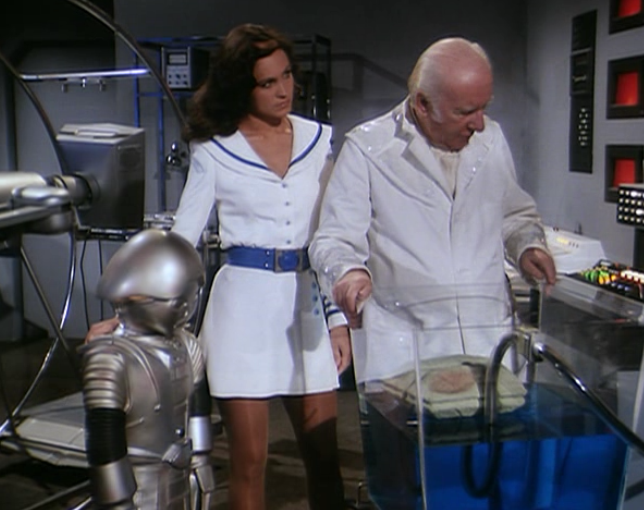
The Buck Rogers TV series is set in 2491. This show was overflowing with sci-fi tropes: lasers, spaceships, groovy fashions, and wisecracking robots. Since it’s still 477 years away, I’ll give it the benefit of the doubt.
15. BACK TO THE FUTURE II

Back to the Future II is set in 2015. Only one more year until the hoverboard!
16. STAR TREK
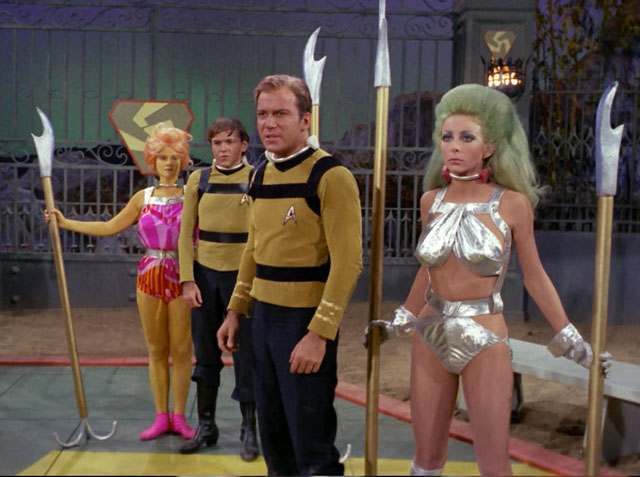
The best method to avoid having your film or TV show woefully outdated may be to set it far beyond the present date like Dune, which is set thousands of years ahead. Or, opt for the Star Wars plan and have it set a long time ago in a galaxy far, far away. But the best plan of all may have been Star Trek which used “Star Dates”, which kept the timeline purposefully ambiguous.
Sadly, that was all ruined by Star Trek: The Next Generation which was set in 2364, which allows us to extrapolate that the original series was about 100 years prior. This really blows the mystique and pisses me off…. what say you, Dr. Bones?
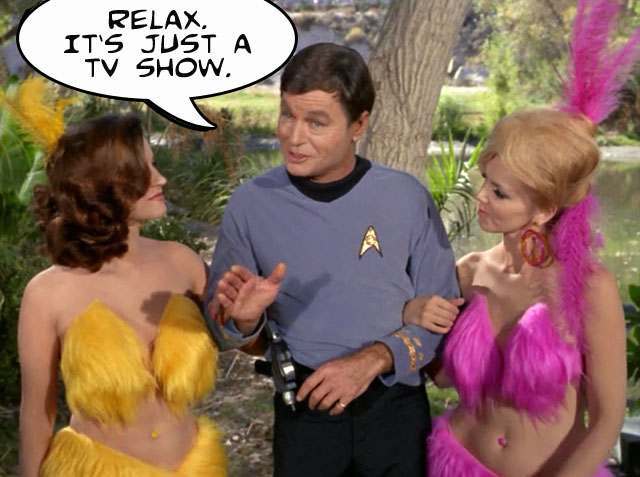
Posted: 3rd, June 2014 | In: Film, Flashback, Key Posts, TV & Radio | Comments (10)
The Devil Made Them Do It: The Five Best Exorcist (1973) Knock-Offs
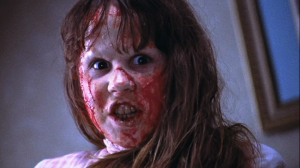
WILLIAM Friedkin’s The Exorcist — based on the best-selling novel by William Peter Blatty — quickly became one of the first genre blockbusters of the seventies, and a generational touchstone to boot.
The Exorcist also represented a new brand of horror film, in a sense, because it lacked a familiar “monster” like Dracula, the Wolf Man or The Frankenstein Monster, and it didn’t depend on well-known genre personalities, like Vincent Price, Christopher Lee, or Peter Cushing, either.
Read the rest of this entry »
Posted: 29th, May 2014 | In: Film, Flashback, Key Posts | Comments (6)
The Top 15 Greatest Retro Sci-Fi TV Themes
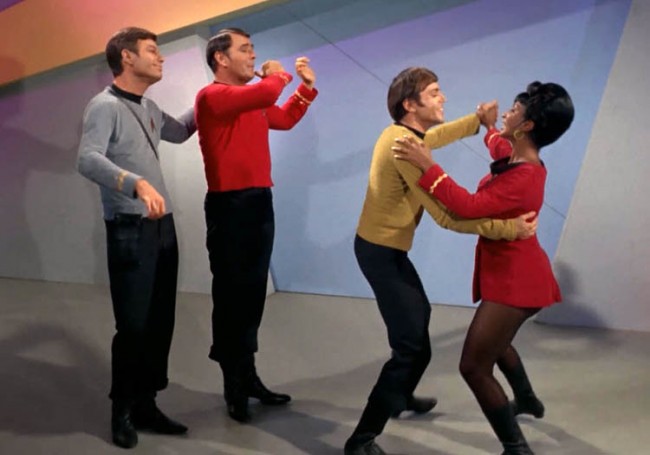
THE mission: To identify the top 15 science fiction television program themes from eons past. It’s a region of space many Internet listers have gone before… but those were just training exercises. This expedition is for real. Let the countdown begin.
1. UFO
Goes well with martinis, miniskirts and go-go boots. Truthfully, anything that conjures up memories of those purple haired Moon Maidens is going to be top of the list.
2. Star Trek (original series)
How could the Star Trek intro not be in the list? No matter what you think of the show, you’ll have to agree this intro captures the thrill of exploration about as good as can be done. We may spend our days in a cubicle behind a desk, but when this intro plays, the dashing and adventurous Magellan lurking deep inside all of us gets bestirred.
3. Dr. Who
The Tom Baker intro will always be my favorite. Nostalgia aside, for my money, the sound of this track captures the “sci-fi feel” (if there is such a thing) better than any other, and the making of it is an amazing story. Only Star Trek trumps it due to Kirk’s brilliant prose.
4. The Twilight Zone
Is there an intro to any show, science fiction or otherwise, more iconic than this? “Doo dee doo doo, doo dee doo doo” has become a part of our lexicon.
5. The Tomorrow People
Similar to the Dr. Who theme, it has that spine-tingling, creepy vibe, yet is unmistakably science-fiction in sound.
6. The Six Million Dollar Man
“We can rebuild him. We have the technology. We can make him better than he was. Better…stronger…faster.”
Gives me goose bumps to this day.
7. The Outer Limits
“There is nothing wrong with your television set. Do not attempt to adjust the picture.”
Anyone who remembers those ominous words intoned across the airwaves can testify that this belongs on the list.
8. Lost in Space
There were a few versions, but the “countdown version” is the best.
9. Space: 1999
You can’t go wrong when you combine the distinctively Seventies “waka waka” with a Gerry Anderson groove.
However, when it comes to raw Seventies sci-fi vibe, nothing comes close to the next on the list…
10. Star Maidens
For all-around 70s sci-fi awesomeness, the ultimate is, without question, Star Maidens. It would be higher on this list, but the intro is just a boring narration. However, the funktastic closing credits and incidental music was solid 70s gold.
11. Logan’s Run
Catchy and corny, but a fun sci-fi intro nonetheless. Of course, Heather Menzies’ constantly fluttering micro-miniskirt may be contributing to my bias.
12. Sapphire and Steel
“All irregularities will be handled by the forces controlling each dimension. Transuranic heavy elements may not be used where there is life. Medium atomic weights are available: Gold, Lead, Copper, Jet, Diamond, Radium, Sapphire, Silver and Steel. Sapphire and Steel have been assigned.”
By the same guy that did the Dr. Who intro, no less.
13. The Starlost
Didn’t think Canada could make a groovy sci-fi theme? Once you get past the sleepy narration, things get hopping.
Thankfully, the series starred a Canadian game show host (Robin Ward) who wasn’t a drooling sexual predator. No idea what the hell I’m talking about? See this post.
Quickly moving right along…
14. Battlestar Galactica
It’s unfortunate that so many sci-fi openers got muddied by lame narration. I suppose a lot of explanation was in order – we wouldn’t want audiences confused. However, unless you have Shatner reading the lines, the theme is in danger of being dull. In the case of Battlestar Galactica, the orchestral part is so sweeping and large sounding, that it washes away the bad memories of Lorne Green’s intro.
15. The Jetsons
Everyone knows the words to this iconic theme song; you simply can’t have a list of top sci-fi themes without it.
I’m sure there are plenty of glaring omissions. (For instance, I nearly included the profoundly awesome Quark theme song, but it’s just too damn similar to Star Trek’s). Please, drop a suggestion in a comment and let’s make this list grow.
Posted: 22nd, May 2014 | In: Film, Key Posts, TV & Radio | Comment (1)

